
The raw mill considered in this study is located in a cement plant located in Gaziantep, Turkey. The The plant is a double chamber mil l with mechanical circula tion system which g rinds a medium ...
WhatsApp: +86 18838072829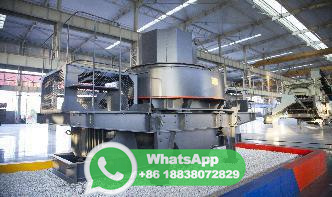
1. Introduction. The control of the raw mill feed before the raw mill and the raw meal after the mill is still indispensable. Because of the complexity and the significance of the control process, various automated systems are available for sampling and analysing the raw mix as well as for adjustment of the mill weight feeders according to the raw meal chemical modules in mill outlet or inlet [1].
WhatsApp: +86 18838072829
Slag grinding plant equipment. The complete set of equipment is mainly composed of jaw crusher, bucket elevator, cement silo, vibrating feeder, slag mill, fan, powder collector, bag filter, etc. 1. Crushing equipment. The slag needs to be crushed into small sizes. Commonly used crushing equipment includes jaw crusher, impact crusher, cone ...
WhatsApp: +86 18838072829
T he dry powder is called the raw meal. ... Cement plants are emitting 15% of global pollutions into the environment among various industries. Cement industry byproducts include dust/particulate ...
WhatsApp: +86 18838072829
Processes. Steve Crompton, in Advanced Concrete Technology, 2003. Environmental considerations. Environmental issues are a major concern of all industries and readymixed concrete is no exception. Emissions of cement dust are strictly controlled by the use of dustextraction systems in loading areas, cement silo filter systems, restrictions on powderblowing pressures and the provision ...
WhatsApp: +86 18838072829
Cement powder, here conditioned in bag, ready to be mixed with aggregates and water. ... of both his concrete and raw cement have shown that William Aspdin's product made at Northfleet, Kent was a true alitebased cement. However, Aspdin's methods were "ruleofthumb": ... A cement plant consumes 3 to 6 GJ of fuel per tonne of clinker produced ...
WhatsApp: +86 18838072829
Cement clinker. Typical clinker nodules. Hot clinker. Cement clinker is a solid material produced in the manufacture of portland cement as an intermediary product. Clinker occurs as lumps or nodules, usually 3 millimetres ( in) to 25 millimetres ( in) in diameter. It is produced by sintering (fusing together without melting to the point ...
WhatsApp: +86 18838072829
The limestone acts as a seed crystal for the cement, better distributing the reaction products and increasing the reactivity of the cement. As there is always unhydrated cement in the concrete, this change will have no real measurable effect on the use of fly ash. The cement might have a reduced water demand, and the coarser cement gradation ...
WhatsApp: +86 18838072829
Baking powder 40 55 Baking soda (sodium bicarbonate) 40 55 Barite (barium sulfate) +1/23" 120 180 Barite powder 120 180 Barium carbonate 72 Bark, wood, refuse 10 20 Ingredient Bulk Density (lb/) Loose Packed Barley, fine, ground 24 38 Barley, malted 31 Barley, meal 28 Barley, whole 36 48 Basalt 80 105 Bauzite, dry, ground 68 Bauzite ...
WhatsApp: +86 18838072829
In general, a full cement production process includes the stone crushing, raw mill process, clinker process, and cement grinding process, cement packing process, and related process. The Portland cement manufacturing process is representative of all types of cement. limestone and clay are the main raw materials of cement making, the cement raw ...
WhatsApp: +86 18838072829
Capacity: 1370T/H Vertica raw mill, also known as vertical roller mill, in the 1920s, the first vertical raw mill in cement plant is designed in German. It is widely used in cement, electric power, metallurgy, chemical industry, and other industries. Advantages
WhatsApp: +86 18838072829
Screw Conveyor. Our TD type and DTII type heavy belt conveyors used in cement plants both have great performance in the longdistance transportation of a large number of bulk materials. They can transport materials with a bulk density of ~ t/m3 within the ambient temperature range of 25 ~ 40℃.
WhatsApp: +86 18838072829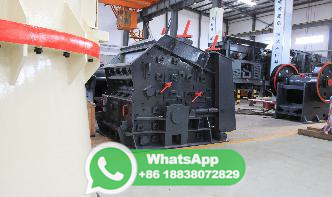
In dry and semidry processes for cement manufacturing, the raw materials will be crushed and then fed in the correct proportions. It is then added to the grinding mill. Then, the raw material will be dried and reduced in size to a fine powder in there. The dry powder you will get there will be called the raw meal then, the raw meal will be ...
WhatsApp: +86 18838072829
Nowadays, ball mills are widely used in cement plants to grind clinker and gypsum to produce cement. The research focuses on the mill speed as well as air classifier speed effect on the two ...
WhatsApp: +86 18838072829
Portland Cement Manufacturing Process Description17 Portland cement is a fine powder, gray or white in color, that consists of a mixture of hydraulic cement materials comprising primarily calcium silicates, aluminates and aluminoferrites. More than 30 raw materials are known to be used in the manufacture of portland cement, and these
WhatsApp: +86 18838072829
While total electrical energy consumption for cement production is about 100 kWh/ton of cement, roughly two thirds are used for particle size reduction [2]. About 65% of the total electrical energy used in a cement plant is utilized for the grinding of coal, raw materials and clinker Fig. 1. The cement industry one of the worst pollutant ...
WhatsApp: +86 18838072829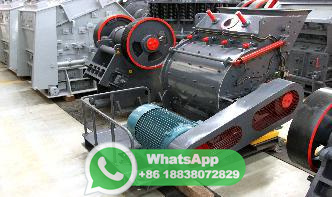
A schematic of the cement plant equipped with the tailend CaL process is shown in Figure 3. In this configuration, the CaL system, characterized by two interconnected circulating fluidized bed reactors, is placed between the preheating tower and the raw mill (Spinelli et al., 2017).
WhatsApp: +86 18838072829
Raw Mill and Cement Mill are essentially two different processes in a cement plant. Raw Mill is mainly used to grind raw materials into fine powder, whereas Cement Mill is used for grinding clinker and other additives to form the final cement product. The main difference between the two lies in their respective input materials; Raw mill mainly ...
WhatsApp: +86 18838072829
In the value stream map of cement manufacturing the raw mill feeding is an intermediate activity between Prehomogenization and raw milling, and has not been discussed separately by most of the authors. However, in my opinion it remains and must remain as of pivotal importance, so far as the quality assurance is considered.
WhatsApp: +86 18838072829
Cement is the powder used as the binder in concrete. Background. ... the main stay of Portland cement production and remains so with coal providing around 90% of the energy consumed by cement plants around the world. ... mill. The raw materials are dried with waste process gases taken from the kiln system.
WhatsApp: +86 18838072829
cement provides for direct absorption of SO2 into the product, thereby mitigating the quantity of SO2 emissions in the exhaust stream. Depending on the process and the source of the sulfur, SO2 absorption ranges from about 70 to more than 95 percent. Organics Cement plants may emit a wide range of organic compounds in trace quantities. The ...
WhatsApp: +86 18838072829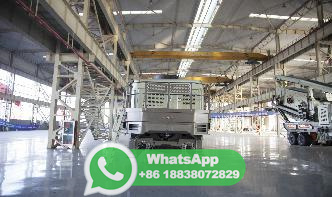
The raw mill machine functions as a main material grinder in the initial milling process such as limestone, silica stone, clay, and iron sand to become raw mix. To find out the frequency of damage ...
WhatsApp: +86 18838072829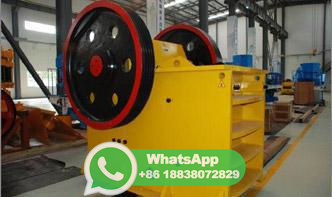
168 views•32 slides. Process OptimizationPyrosection (21120).pdf Hari krushna Panigrahy. 625 views•195 slides. Cement manufacturing process NITIN ASNANI. 739 views•64 slides. Heat Mass Balance in Cement Plant NITIN ASNANI. views•133 slides. Vertical raw mill pradeep kumar Download as a PDF or view online for free.
WhatsApp: +86 18838072829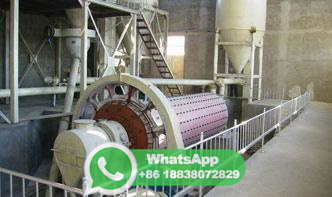
A mediumsized dry process roller mill. A raw mill is the equipment used to grind raw materials into "rawmix" during the manufacture of cement. Rawmix is then fed to a cement kiln, which transforms it into clinker, which is then ground to make cement in the cement raw milling stage of the process effectively defines the chemistry (and therefore physical properties) of the finished ...
WhatsApp: +86 18838072829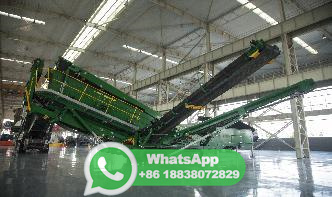
A 10 MW cement mill, producing cement at 270 tonnes per hour. Main article: Cement mill To achieve the desired setting qualities in the finished product, a quantity (28%, but typically 5%) of calcium sulfate (usually gypsum or anhydrite ) is added to the clinker, and the mixture is finely ground to form the finished cement powder.
WhatsApp: +86 18838072829
Raw materials used for cement manufacturing. Cement manufacturing is an energy and resource intensive process. It involves closely controlled chemical reactions between calcium silicate minerals at high temperatures of above 1400 degree Celsius. In this process, chemical bonds of key raw materials limestone, shell, chalk, sand, clays ...
WhatsApp: +86 18838072829
The answer is the cement industry. Limestone plays two major roles in the cement manufacturing process, one is used as a raw material for cement clinker, and the other is used as a cement admixture. Limestone is one of the key raw materials of cement clinker. Around 8090% of the raw material for the kiln feed is limestone.
WhatsApp: +86 18838072829